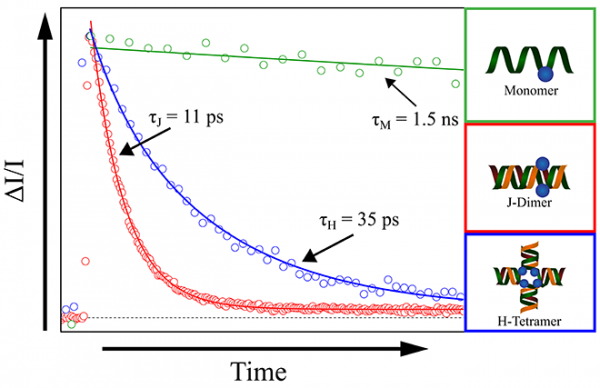April 23, 2019 – Jonathan Huff, a Ph.D. student in the Nanoscale Materials and Device group, recently reported on the excited-state dynamics of DNA-templated aggregates of strongly coupled cyanine dyes. Molecular aggregates are highly interesting for their wide-ranging potential applications, including light harvesting, organic optoelectronics, and nanoscale computing. While important details of the static structure of DNA-templated molecular aggregates have been reported, studies of their excited-state dynamics, critical to device function, are less common. The team found that excited-state lifetimes are drastically accelerated in the DNA-templated aggregates of strongly-coupled cyanine dyes and that nonradiative decay is largely responsible for the short excited-state lifetimes. The finding represents an important step toward better understanding accelerated excited-state lifetimes and excited-state quenching in DNA-templated dye aggregates.
The work, titled “DNA-Templated Constructs of Strongly-Coupled Cyanine Dyes: Nonradiative Decay Governs Exciton Lifetimes,” was published recently in the Journal of Physical Chemistry Letters (DOI: 10.1021/acs.jpclett.9b00404) and was supported by the National Science Foundation (NSF) INSPIRE No. 1648655 and NSF MRI Award 0923541. Portions of the work were also supported by the Department of Energy (DOE), LDRD No. 154754.
